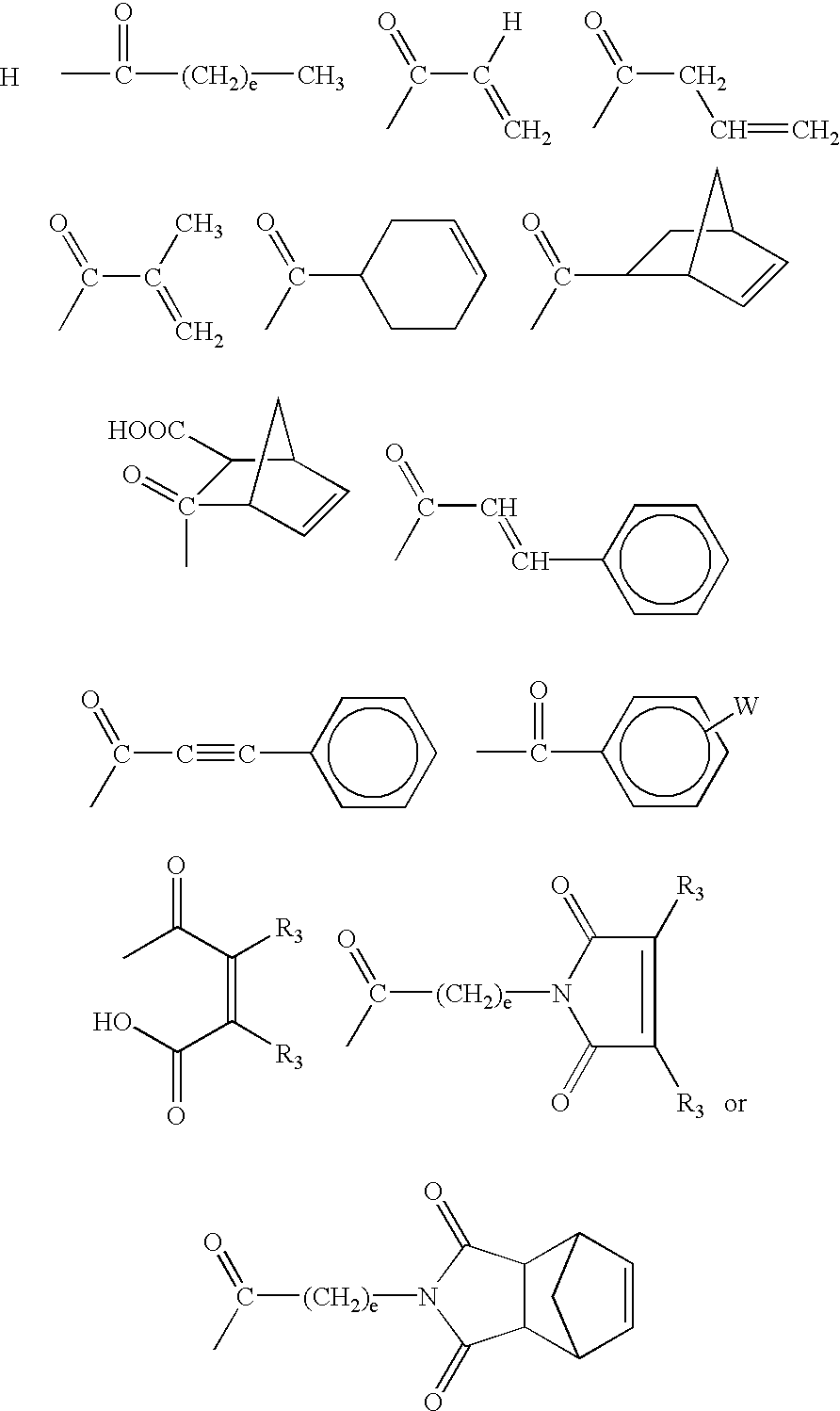Adhesively bonded chip-and wafer stacks
a technology of adhesive bonding and wafers, applied in the direction of synthetic resin layered products, packaging, printing, etc., can solve the problems of blistering later, poor adhesion of polyimides to many materials used in microelectronics and optoelectronics, etc., and achieve the effect of increasing the memory capacity without increasing the area of the chip and cost-effectiv
- Summary
- Abstract
- Description
- Claims
- Application Information
AI Technical Summary
Benefits of technology
Problems solved by technology
Method used
Image
Examples
example 1
Polyhydroxyamide 1
[0135] 338.76 g (0.6 mol) of bisaminophenol 1 are dissolved in 600 ml of distilled N-methylpyrrolidone (NMP). Added dropwise to this solution at 10.degree. C. with stirring is a solution of 141.66 g (0.48 mol) of dicarbonyl chloride 1 in 550 ml of distilled .gamma.-butyrolactone (.gamma.-BL). The mixture is stirred at 10.degree. C. for 1 hour and then at 20.degree. C. for 1 hour. Following renewed cooling to 10.degree. C., 25.09 g (0.24 mol) of endcap 1 in solution in 250 ml of distilled .gamma.-BL are added dropwise to the reaction mixture, which is stirred at 10.degree. C. for 1 hour and then at 20.degree. C. for 1 hour. After cooling to 10.degree. C., the reaction mixture is admixed with 126.5 g (1.6 mol) of pyridine in solution in 450 ml of distilled .gamma.-BL, warmed to room temperature, and stirred for 2 hours.
[0136] To isolate the polymer the reaction mixture is filtered and the filtrate is introduced dropwise into a mixture of 2 l of deionized (DI) water a...
example 2
Polyhydroxy Amide 2
[0138] 219.76 g (0.6 mol) of bisaminophenol 2 are dissolved in 600 ml of distilled N-methylpyrrolidone (NMP). Added dropwise to this solution at 10.degree. C. with stirring is a solution of 141.66 g (0.48 mol) of dicarbonyl chloride 1 in 550 ml of distilled .gamma.-butyrolactone (.gamma.-BL). The mixture is stirred at 10.degree. C. for 1 hour and then at 20.degree. C. for 1 hour. Following renewed cooling to 10.degree. C., 25.09 g (0.24 mol) of endcap 1 in solution in 250 ml of distilled .gamma.-BL are added dropwise to the reaction mixture, which is stirred at 10.degree. C. for 1 hour and then at 20.degree. C. for 1 hour. After cooling to 10.degree. C., the reaction mixture is admixed with 126.5 g (1.6 mol) of pyridine in solution in 450 ml of distilled .gamma.-BL, warmed to room temperature, and stirred for 2 hours.
[0139] Polyhydroxy amide 2 is worked up as in example 1. Yield: 324 g.
example 3
Polyhydroxy Amide 3
[0140] 219.76 g (0.6 mol) of bisaminophenol 2 are dissolved in 600 ml of distilled N-methylpyrrolidone (NMP). Added dropwise to this solution at 10.degree. C. with stirring is a solution of 164.72 g (0.48 mol) of dicarbonyl chloride 2 in 550 ml of distilled NMP. The mixture is stirred at 10.degree. C. for 1 hour and then at 20.degree. C. for 1 hour. Following renewed cooling to 10.degree. C., 21.72 g (0.24 mol) of endcap 2 in solution in 250 ml of distilled .gamma.-BL are added dropwise to the reaction mixture, which is stirred at 10.degree. C. for 1 hour and then at 20.degree. C. for 1 hour. After cooling to 10.degree. C., the reaction mixture is admixed with 126.5 g (1.6 mol) of pyridine in solution in 450 ml of distilled .gamma.-BL, warmed to room temperature, and stirred for 2 hours.
[0141] Polyhydroxy amide 3 is worked up as in example 1. Yield: 324 g.
PUM
| Property | Measurement | Unit |
|---|---|---|
| temperatures | aaaaa | aaaaa |
| temperatures | aaaaa | aaaaa |
| temperatures | aaaaa | aaaaa |
Abstract
Description
Claims
Application Information
 Login to View More
Login to View More - R&D
- Intellectual Property
- Life Sciences
- Materials
- Tech Scout
- Unparalleled Data Quality
- Higher Quality Content
- 60% Fewer Hallucinations
Browse by: Latest US Patents, China's latest patents, Technical Efficacy Thesaurus, Application Domain, Technology Topic, Popular Technical Reports.
© 2025 PatSnap. All rights reserved.Legal|Privacy policy|Modern Slavery Act Transparency Statement|Sitemap|About US| Contact US: help@patsnap.com



